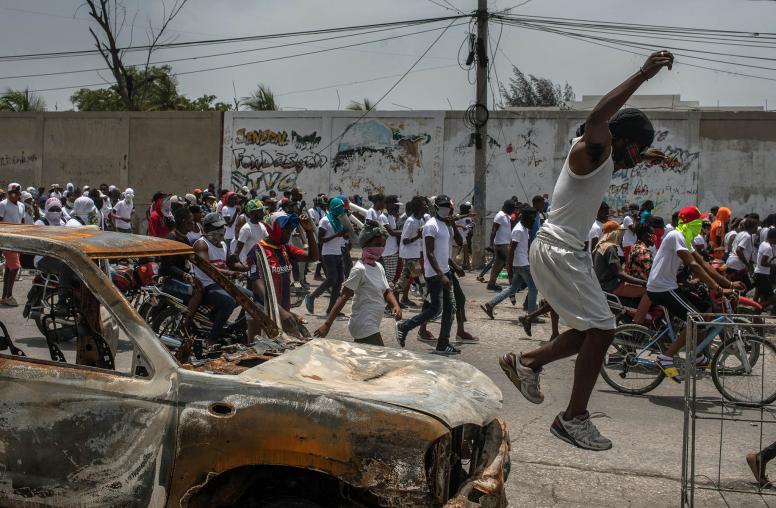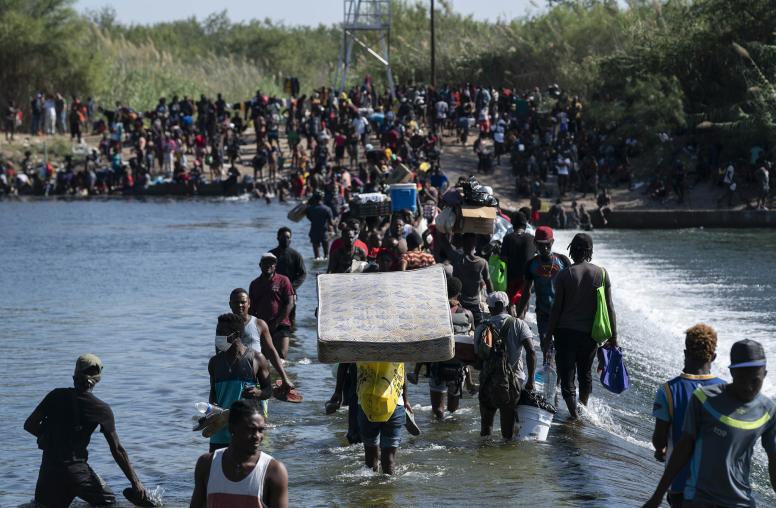Education and Conflict in Haiti
The massive earthquake of January 2010 devastated almost every aspect of Haitian society, but it also presented an excellent opportunity to address the problems of the largely dysfunctional education sector.

Summary
- The massive earthquake of January 2010 devastated almost every aspect of Haitian society, but it also presented an excellent opportunity to address the problems of the largely dysfunctional education sector.
- Education has not only served to prevent, mitigate, and resolve conflict in Haiti, it has also functioned as an underlying cause of, contributor to, and trigger for violent conflict. These issues must be addressed if Haiti’s rebuilding efforts are to succeed.
- The Haitian authorities need to implement substantial structural reforms to address past policies of exclusion and overcentralization, as well as financial and language barriers.
- Primary education for all children under the age of fourteen should be free and compulsory. Substantial investment is needed in vocational training, as well as in adult education and civic and peace education.
- Teacher and technical education should be promoted through campaigns to improve the status of these professions, incentives to participate in pre-service and in-service programs, and financial and other awards.
- Curriculum and training options need to reflect the number and types of jobs that may be available after students graduate, providing the skills necessary to support a modern economy.
- The state should work with the private sector in expanding public-private partnerships, for example in the areas of school construction, scholarships, trainee programs, long-distance radio programs, and internships.
- Haiti needs to do much more to develop students’ and teachers’ capacities to manage conflict peacefully by making teaching methods more student-centered, promoting critical thinking and creative problem solving, and reforming curriculum to encourage tolerance and inclusion.
- The international community must recognize that long-term security and development depend on a well-functioning education system. The international community can help by assisting with the establishment of a clear strategic plan for education, including ways to monitor and assess reform.
About the Report
In Haiti, education both promotes and ameliorates conflict. This report describes the education sector before the 2010 earthquake, then presents recommendations on how Haiti and the international community can increase access to and the quality of Haitian schools and modernize the organization and function of the national education sector. Although these recommendations were initially developed before the earthquake occurred, the basic problems are unchanged, and the recommendations are relevant for “building back better,” in UN secretary-general Ban Ki-moon’s words.
Ketty Luzincourt is chief executive officer of the Haitian Institute of Peace in Port-au-Prince, and Jennifer Gulbrandson is a program officer at Freedom House in Washington, D.C. The report was funded by the United States Institute of Peace’s Education and Training Center and supplements the work of the Institute’s Haiti Working Group, which has convened public forums and produced in-depth analyses of developments in Haiti and in U.S.-Haitian relations since 2006.

